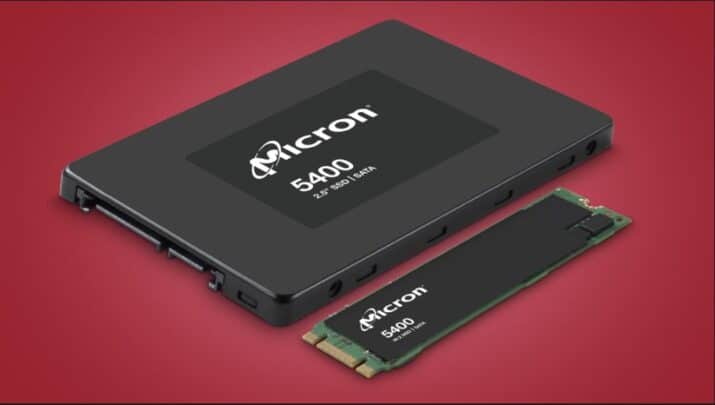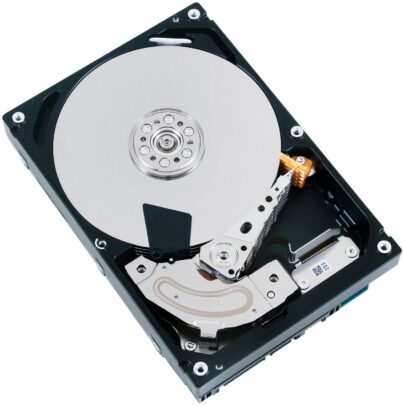Learn about the SSHD hard drive, the difference between it and SSD and HDD, and which one is better for your device
SSHD hard is a type that you certainly haven't heard much about, a type of storage unit that is not widespread, I mean you certainly know what SSD is and what HDD is, and we explained in a previous article the difference between the two types and which one is better and faster on your device, but this SSHD is new to you, so what is this type? In this article we talk about SSHD storage units in detail, and the difference between them and other storage units.
A quick introduction to SSD and HDD
In order not to take much of your time, SSD is an abbreviation for Solid-State Drive, which is a type of storage disk that relies in its work on the use of Memory blocks or fixed storage units, electronics to be more precise, like a USB flash drive, but of course in a more advanced way, while HDD, which is an abbreviation for Hard Disk Drive, is a magnetic disk like a CD on which data is stored, and its work relies on the rotation of the disk and reading the data written on it, because it relies on the rotation of the disk, we measure its efficiency using the number of revolutions per minute (RPM), and the higher the number, the better the hard disk.

The difference between SSD and HDD is in the working mechanism, which in turn leads to a difference in usage speeds. Since SSD does not depend on any mechanical parts, this makes it more efficient than HDD, and thus faster writing and reading speeds, which makes SSD much better than HDD and more expensive. But the question remains, what does all this have to do with SSHD?

What is SSHD hard drive?
The name is an abbreviation for Solid-State Hybrid Drive, which is a regular HDD with an SSD built into it. This space is usually small, about 8GB or 16GB only, in addition to the HDD space that reaches and exceeds 2TB of space. Even in Windows, when you read the SSHD space, you will find that it is basically divided into two spaces, one for the SSD part of it and the other for the HDD part. In this case, the system decides what files can be placed on the SSD, which are usually application and system running files, so that the process of running anything is faster than the HDD.

Which is better, SSD, HDD or SSHD?
This comparison is somewhat unanswerable, or there is a clear answer which is that the SSD is better than the other two types, but the dilemma remains in balancing the cost and the output. The HDD is the cheapest thing in this comparison, but in return it gives you the worst possible performance and speeds that do not exceed 130MB/s. The SSHD combines the two, as it is a bit more expensive than the HDD and can provide the service of being faster in the process of booting the device and running applications, but the process of writing and reading on it will be at the same speed as the HDD in the end, while the SSD is higher in everything, higher in reading speed and writing speed, as well as higher in price.
Read also: The difference between the different types of SSD NVMe and Sata in detail
If you think about buying, what will control you here is the price. If you do not have a lot of financial luxury, you will buy an HDD because it is the cheapest. Yes, it will not be the best, but money controls you. If you want slightly higher speeds, you can look for an SSHD after that, which will cost you a little more. However, if you are looking for the highest speed, be prepared to pay a lot of money for an SSD. The price of 1TB of HDD will cost you approximately 800 to 900 Egyptian pounds, while the SSHD will cost you more than 1000 pounds, while the SSD will guarantee you a capacity of 1TB of approximately 1700 pounds or more for the Sata type and up to 2500 pounds for the NVMe type, depending on the type of SSD you buy for the same capacity.
Comparison between SSD, HDD and SSHD

Which one do you choose? SSD, HDD or SSHD?
In fact, whether we are talking about a laptop or a PC, I see that the SSD is indispensable. Most laptops today, if not all, have an NVMe port inside them next to the regular SATA port, so you can put an NVMe SSD next to the HDD or SSHD without worry, and this is recommended. For example, I use 500GB of SSD next to 1TB of HDD to ensure fast space for applications and the system, with another large space for storage. In PCs, you have more freedom in the ports, especially if you are using a Full Tower case that gives you more space to put different storage disks with greater freedom, so you can adjust your budget between SSD, HDD, and SSHD.
Read also:
The difference between SSD, M.2 and NVMe hard drives, and what is the appropriate use for each storage unit?

